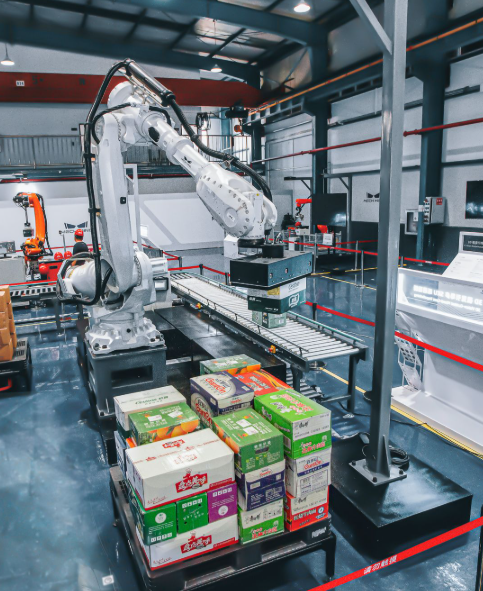
How Batch Production Can Improve Your Business Efficiency
Have you ever wondered how large companies quickly launch products that are available nationwide? The answer lies in batch production. This manufacturing method allows businesses to produce large quantities of products in a single process, saving both time and money while improving efficiency.
Batch production involves breaking down the manufacturing process into smaller, manageable batches, making it easier to control and monitor. This method is ideal for producing complex items that require multiple parts, such as electronics, vehicles, or furniture. In this article, we’ll dive into the pros and cons of batch production, its key stages, and how it benefits businesses in various industries.
How Does Batch Production Work?
Batch production is a method where similar products are produced in groups, or “batches,” with each batch going through different stages of production. Initially, all items in the batch undergo the same process step. Once completed, the batch moves to the next stage, where workers repeat the process until the production is finished.
This system provides manufacturers with more control over production, as changes can be made at various points in the process. It’s versatile, allowing for variations of the same product and ensuring quality control at every stage, which minimizes waste and maximizes efficiency.
Key Stages in Batch Production
Batch production is widely used in many industries, including food processing, automotive manufacturing, and pharmaceuticals. It offers a perfect balance between large-scale production and maintaining product quality. Here’s a breakdown of the key stages involved in the process:
- Planning
This crucial stage involves creating a detailed production plan, including determining the required materials, machinery, timelines, and costs. Proper planning ensures that production goals are met efficiently and that all necessary resources are allocated in advance. - Preparation
Once the plan is set, the next step is preparing the materials and equipment needed for production. This stage ensures that everything, from the raw materials to the production line setup, is in optimal condition and ready for manufacturing. - Manufacturing
The manufacturing stage involves the actual production of the items. At this point, the prepared materials are processed, and machines are operated according to the plan. Skilled workers handle the equipment, ensuring everything runs smoothly according to the production schedule. - Final Testing
After the products are manufactured, they undergo a thorough testing process. This stage ensures that each product meets the required specifications and quality standards. Any defective items are identified and addressed before moving to the next step. - Packaging
Once the products pass quality control, they are packaged for distribution. Packaging involves choosing suitable materials, designing labels, and ensuring the products are ready for shipment while being properly protected during transit. - Shipping
The final stage involves shipping the products to distributors or directly to customers. This includes selecting the appropriate carriers, preparing shipping documents, and ensuring that the products arrive on time and in good condition. - Maintenance
Regular maintenance is crucial for ensuring the longevity and efficiency of production equipment. This stage involves servicing machines, replacing worn-out parts, and cleaning the production area to maintain a safe and effective working environment.
What Types of Businesses Benefit from Batch Production?
Batch production is ideal for businesses that produce a variety of products in medium quantities. It’s particularly useful for industries where production needs fluctuate based on demand. Here are a few examples of industries that benefit from batch production:
- Pharmaceuticals: Pharmaceutical companies often produce medications in batches, adjusting production levels based on seasonal demand or market conditions. For example, flu medications can be produced in larger batches during flu season, while other drugs may be produced in smaller quantities as needed.
- Bakeries: Bakeries also benefit from batch production. They can scale production up or down depending on demand. The same equipment, such as ovens and mixers, can be used to produce different types of baked goods, allowing for flexibility in meeting customer needs.
While batch production works well for these industries, it’s not the best option for businesses that require continuous production, such as automobile assembly lines or bottling plants. These industries need a constant, uninterrupted flow of production, which is better suited for continuous or mass production methods.
Advantages and Disadvantages of Batch Production
Batch production offers several benefits, but it also has its drawbacks. Here are the main advantages and disadvantages to consider:
Advantages:
- Flexibility: Batch production allows businesses to produce different versions of the same product and make adjustments along the way. This is particularly useful for businesses with diverse product lines.
- Cost Efficiency: Economies of scale help reduce unit costs, making batch production more affordable compared to smaller-scale manufacturing.
- Quality Control: Regular checks throughout the production process help maintain consistent product quality, minimizing defects and waste.
Disadvantages:
- Downtime: Changes between batches can cause downtime, especially when switching from one product to another. This can lead to inefficiencies and delays.
- Higher Labor Costs: Multiple setup changes and complex scheduling can result in higher labor costs, especially for small batches.
- Inconsistent Workflow: The irregular flow of production can lead to disruptions and challenges in maintaining consistent product quality across batches.
Conclusion
Batch production offers significant advantages in terms of flexibility, cost savings, and quality control, making it an ideal choice for many businesses. However, the process does come with challenges, such as downtime and scheduling complexities, which can impact overall efficiency. By understanding the key stages and the advantages and disadvantages of batch production, businesses can determine whether it’s the right choice for their operations.